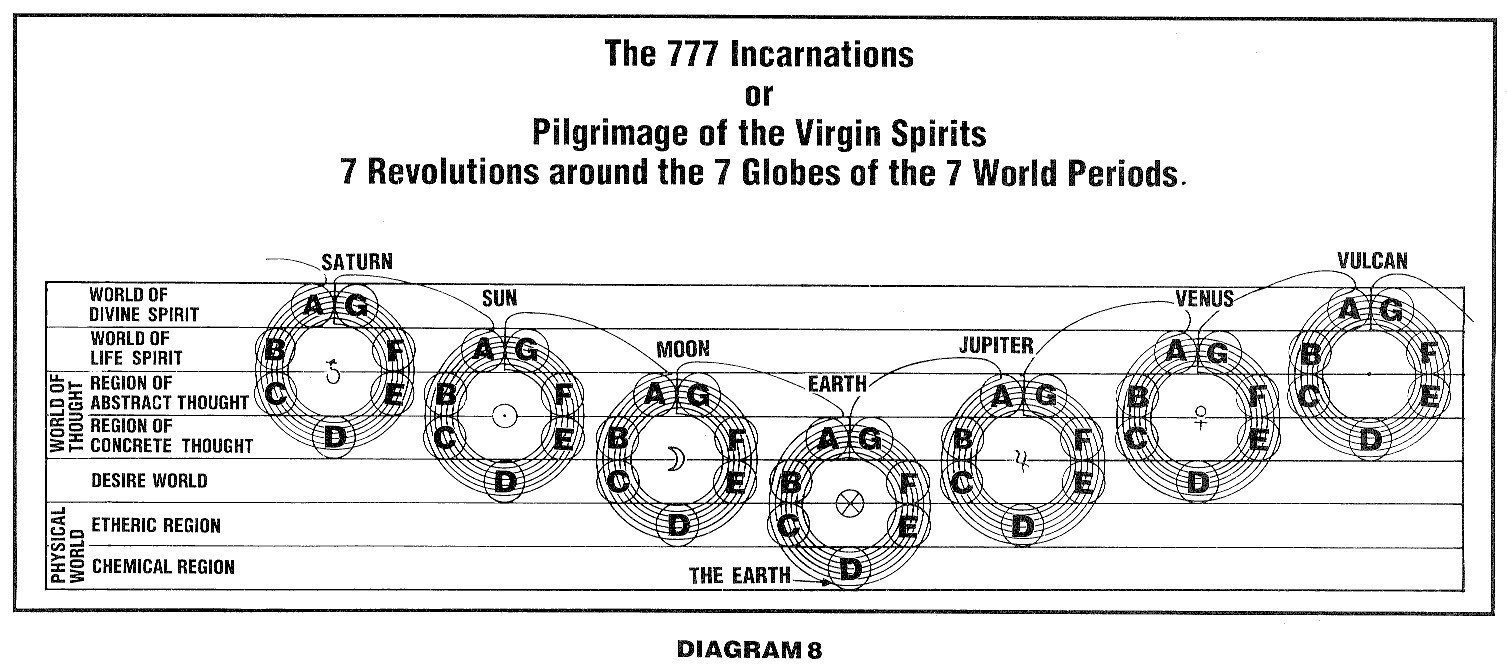
| rosicrucianU.com | ||
| Simplified Scientific Christianity |

The swan is capable of moving in several elements. It may fly in the air with great swiftness; it also propels itself majestically upon the water; and by means of its long neck it may even explore the depths and investigate whatever may be found upon the bottom of a not too deep pond. It is, therefore, an apt symbol of the Initiate, who, on account of the power developed within him, is capable of elevating himself to higher realms, and moving in different worlds. As the swan flies through space, so may one who has developed the powers of his soul body travel in it over mountains and lakes; as the swan dive below the surface of the water, so may also the Initiate go underneath the surface of the deep in his soul body, which is not in danger from fire, earth, air, or water. In fact, that is one of the first things that the Invisible Helpers have to be taught: that they are immune from any danger which may befall them in the physical body, when they are invested with the Golden Wedding Garment of which we have spoken so much. Thus they may enter a burning building with immunity, there assisting those who are in danger, sometimes in a most miraculous manner; or they may be on board a sinking ship giving encouragement to those who are about to face the great change.
The ancient Norse mythology tells us how noble warriors of old, when they had fought the battle and had finally been overcome or mortally wounded, sang their swan song. But let it not be supposed for a moment that it was only the brutal fight fought upon the battlefield with sword and lance that was meant; rather it was the inner fight, the hidden meaning, that a noble soul who had fought the battle of life well, at the last when he had attained to that which was possible in those days, sang his swan song: that is he took his oath of Initiation and became capable of entering another realm to help others there as he had helped them here; for it was ever the sacred duty of a noble knight to succor those who were weak and heavy laden.
Elsa is the daughter of a king. She is thus of the highest and most noble birth. No one who is not thus well born can lay claim to the services of such a knight as Lohengrin in that manner; that is to say of course, there is in humanity neither high nor low, save as we stand in the scale of evolution. When a soul has been long upon the stage of life, has gone to school for many, many lives, then gradually it acquires that nobility which comes from learning the lessons and working along the lines laid down by the schoolmasters, our Elder Brothers, who are now teaching us the lessons of life. The nobility earned by eagerness to do deeds of mercy for our less highly advanced fellow beings, is the key to their favor, and therefore when Elsa was in distress, a noble soul is sent to teach and guide her.
In the Book of Revelation we read about the mystic marriage of the Bride and the Lamb. There is that marriage in every soul's experience, and always under similar circumstances. One of the first requisites is that the soul must have been forsaken by every one else: it must stand alone without a single friend in the world. When that point has been attained, when the soul sees no succor from any earthly source, when it turns with its whole heart to heaven and prays for deliverance, then comes the deliverer and also the offer of marriage. In other words, the true Teacher always comes in response to the earnest prayers of the aspirant, but not till he has forsaken the world and been forsaken by it. He offers to take care of one who is thus anxious for guidance, and forthwith conquers untruth with the sword of truth, but having given this proof, henceforth he requires an absolute unquestioning faith. Please remember — let it imprint itself upon your mind, let it sear itself into your very being with letters of fire, that having come in answer to the prayer, (which is not only words but a life of aspiration) the indubitable, unquestionable proof is given of the power and ability of the Teacher to teach, to guide, and to help; and then the requirement is made that henceforth there must be absolute faith in him, otherwise it becomes impossible for him to work with the aspirant.
That is the great lesson that is taught by Lohengrin, and it is of supreme importance, for there are thousands upon thousands walking the streets in many cities today, looking hither and thither, seeking a teacher. Some pretend to have found him, or have deceived themselves into that belief; but the requirement that is enunciated in Lohengrin is an actual requirement. The Teacher must, will, and does prove his ability. He is known by his fruits; then in return he demands loyalty, and unless this faith, this loyalty, this readiness to serve, this willingness to do whatever is required, is forthcoming from the aspirant, the relationship will be terminated. No matter how hot may be the tears of repentance which might follow in the case of the aspirant who had failed in his loyalty to the Teacher, no matter how sincere his repentance; the next opportunity will not be forthcoming in the present life.
Therefore, it is of the very greatest importance that those who are seeking Initiation should understand that there is something due them from the professed Teacher, before they accept him. He must show the fruits of his work, for as Christ said, "By their fruits ye shall know them." This the genuine teacher always does without being asked, and without seeming to do so or to want to give a sign. He always furnishes some evidence to which the mind of the aspirant can cling as an indubitable proof of his superior knowledge and ability. When that has then been demonstrated, it is absolutely essential that loyalty to the Teacher must follow; and no matter who says this, that, or the other thing, the aspirant should not be disturbed, but cling steadfastly to the proven fact, stick to that which he believes to be true and faithfully uphold the one to whom he looks for teaching; for unless that faith is there, there is no use in continuing the relationship.
It is very significant, however, that Elsa's brother was, as we learn from the final scene, the swan which had carried Lohengrin to his sister, and who was changed back to his natural shape when Lohengrin departed. He had been through Initiation. He, no doubt, knew of his sister's plight, as one soul who is advanced and studying along these lines knows of another's struggles, but although he saw the predicament of this fair aspirant, or sister soul, he had no fear, for was he not the means of bringing to her the succor that she might have had permanently had she been as faithful as he?
(You are welcome to e-mail your answers and/or comments to us. Please be sure to include the course name and Independent Study Module number in your e-mail to us. Or, you are also welcome to use the answer form below.)
1. In what way is the swan an apt symbol of the Initiate?
2. What is one of the first things the Invisible Helpers have to be taught?
3. What is meant in the ancient Norse mythology when they refer to the noble warriors singing their swan song?
4. How do we gradually acquire nobility in the scale of evolution?
5. When does the true Teacher appear?
6. After unquestionable proof is given by the Teacher, what is the requirement made of the aspirant?
7. What is the great lesson taught by Lohengrin?

|

|

|
|
|
Contemporary Mystic Christianity |
|
|
This web page has been edited and/or excerpted from reference material, has been modified from its original version, and is in conformance with the web host's Members Terms & Conditions. This website is offered to the public by students of The Rosicrucian Teachings, and has no official affiliation with any organization. | Mobile Version | |
|